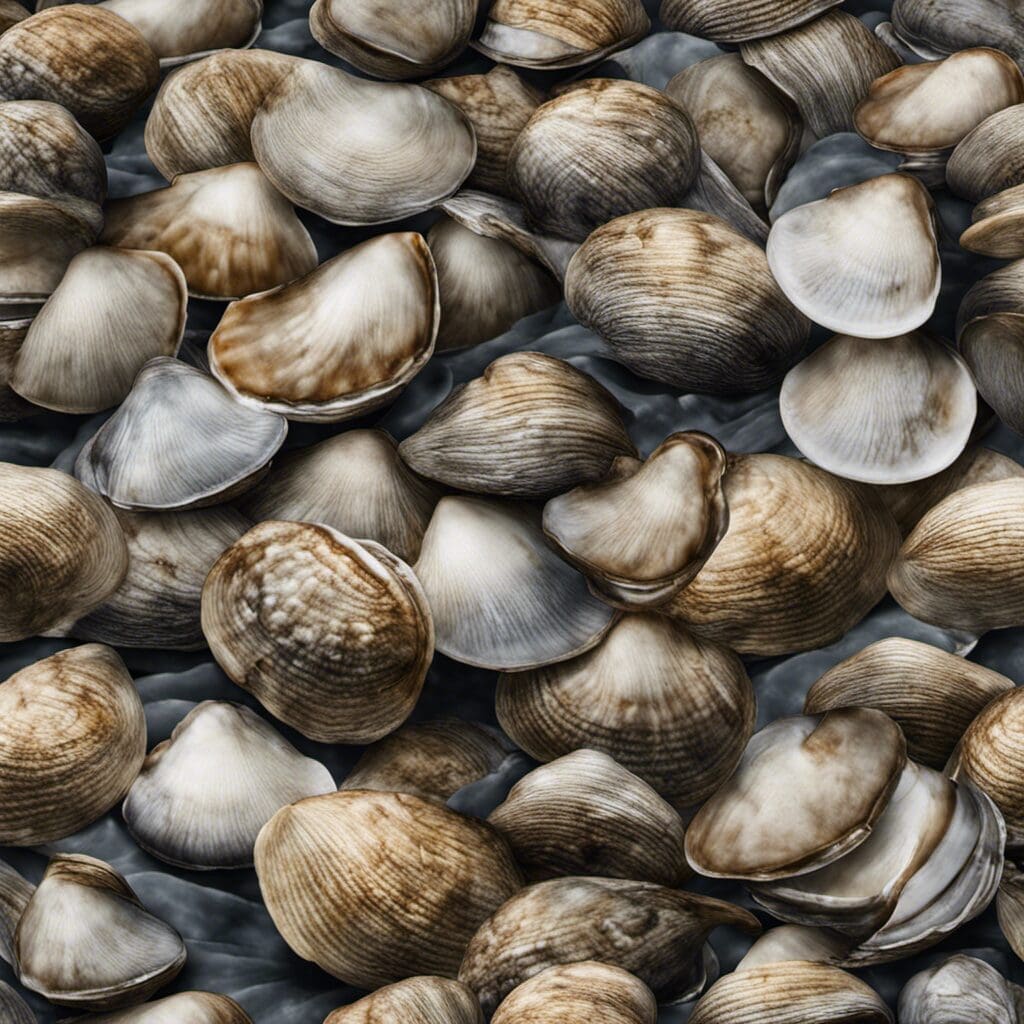Introduction
The Clam is a common name for several species of bivalve molluscs. They are part of the family Veneridae, known colloquially as the Venus clams. Not all clams are saltwater creatures — some prefer freshwater environments.
Conservation Status
Most clam species have not been evaluated for their conservation status. Convention on International Trade in Endangered Species (CITES) does not list them as an endangered or threatened species. However, localized populations can experience threats due to overfishing or habitat destruction.
Statistics
| Statistic | Average | Range |
|---|---|---|
| Length | 50mm | 5-150mm |
| Weight | 200g | 100-300g |
| Average Lifespan | 20 years | 10-30 years |
| Max Depth | Not Specified | Up to 400 meters |
Distribution
Clams can be found globally — from the cold oceans of the Arctic and Antarctic to the warm waters of the tropics. They don’t often migrate and are likely to stay in one spot unless disturbed.
Habitats
- Water Type: Freshwater and Saltwater
- Depth Range: Clams can be found from the shallow intertidal zone to depths of 400 meters or more
- Temperature Range: From arctic to tropical climates
When and Where to See
Clams are most often seen during low tide, as many species burrow in the sand or mud at the edge of water bodies. Their presence is often marked by small holes or ”shows” in the substrate.
Best Fishing Locations
Finding clams often involves a bit of detective work, looking for key signs like shows. Specific hotspots include:
- Maine, USA – Particularly for soft-shell clams
- Washington, USA – Home to the geoduck clam
- Nova Scotia, Canada – Digging for clams is a popular pastime
- New Zealand – Particularly for green lipped mussels
- Japan – Known for a variety of clam species
How to Catch
Clamming typically requires a shovel or specialized clam rake. Digging or raking in the appropriate substrate during low tide is the most common technique. No specific bait is required as clams filter feed. The best time for clamming is generally during low tide.
Identification Guide
Clams vary greatly in size and color based on species. Many have two equally sized shells covered in periostracum, a thin, often rough, organic outer layer. Clam shells may be white, cream, brown, or even purple, depending on the species.
Culinary
Clams are a popular seafood staple around the world. Flavor profiles can vary between species and waters where they are harvested. They provide a high source of protein and are often featured in recipes like clam chowder, pasta and various types of seafood dishes.
Additional Information
Clams play a major role in their ecosystems. They filter water while feeding, removing toxins and improving water clarity. They’re an important food source for a variety of wildlife, including fish, birds, and humans. Clams also feature in culture and history, from Native American wampum to the giant clam myths of the South Pacific.
References and Further Reading
Please refer to iNaturalist and World Register of Marine Species for more information about clams, their distributions and species variety.

